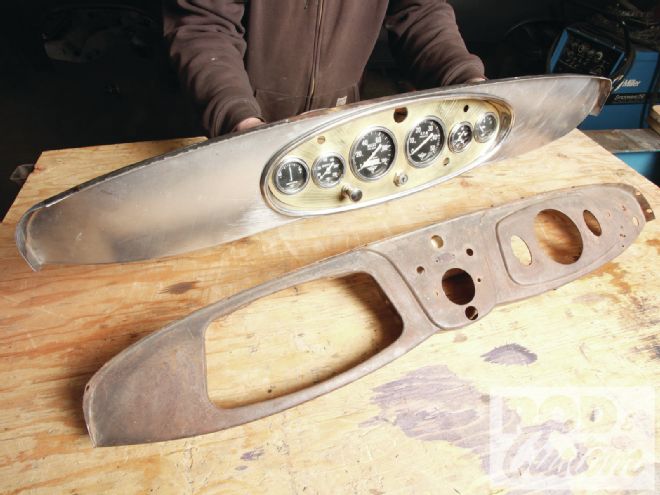
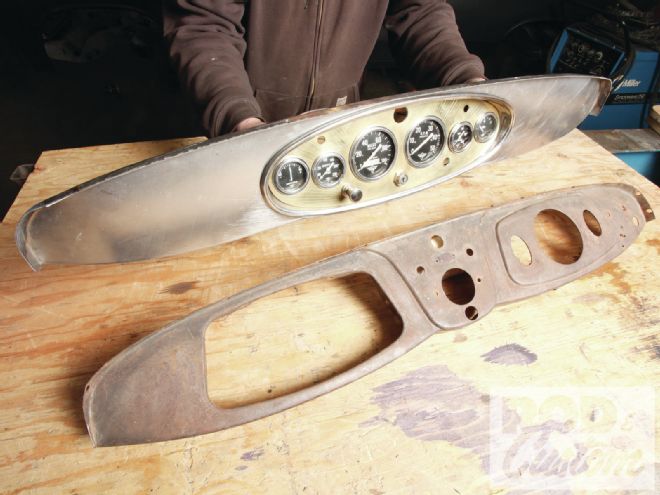
One of my favorite books happens to be one of the most specific. It also has one of the most economical titles: Dashboards.
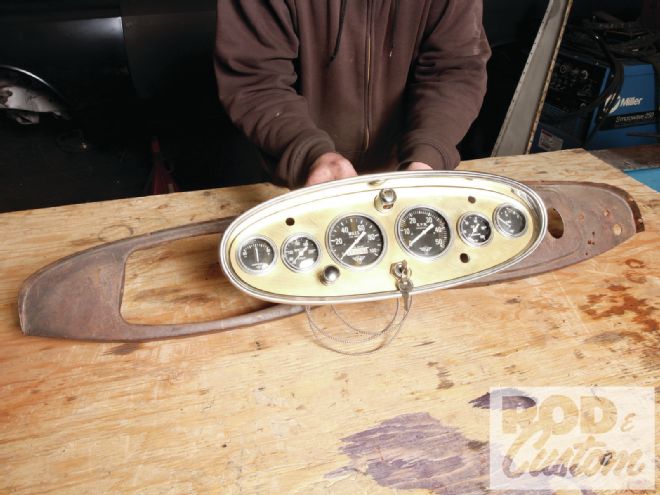 1 The perspective makes the panel look a lot bigger than the dash, but it still won’t fit in the dash shape. The center needs to drop down to match.
1 The perspective makes the panel look a lot bigger than the dash, but it still won’t fit in the dash shape. The center needs to drop down to match.
It’s hardly more than a picture book, but boy, what a piece. In it, photographer David Holland examines some of the most significant cars in the world, not by their bodies but by their dashboards. As Formula 1 race car designer Gordon Murray explains in his foreword, the dashboard—probably the single most complex part of a car until recent years—represents a vehicle in the most concise terms. And the book showcases a range of examples, from the modesty of the Model T and its lonely ammeter to the ornate complexity of the panel in a ’26 Blower Bentley. One glance of each dashboard reveals the function of its vehicle: the Ford, frugal utility; the Bentley, speed.
Bentley may be far afield for most of us but the cars we build borrow from both camps: We’re essentially Bentley buffs on a Ford budget. And whether or not we know it, our dashboards also reveal the way we feel about our cars. A flat dash adorned with flavor-of-the-month gauges speaks volumes of a car’s owner.
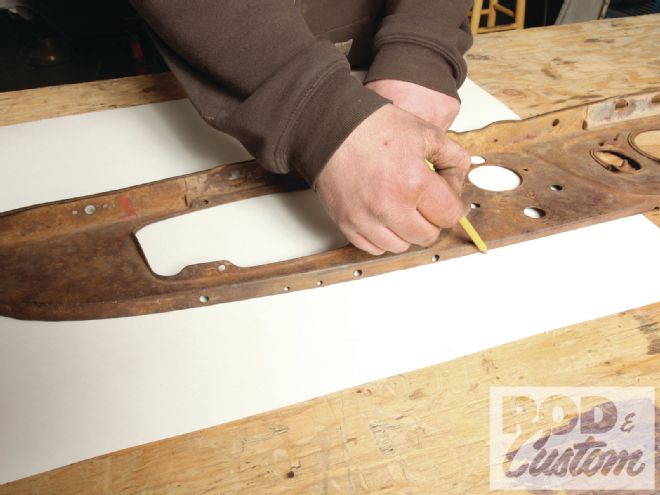 2 Woolery began by tracing the existing dash profile on a sheet of butcher paper.
2 Woolery began by tracing the existing dash profile on a sheet of butcher paper.
Mike Bach feels pretty passionately about his latest car, a ’33 roadster. Though he got it as a really nice, well-crafted car, he asked Marshall Woolery at Thun Field Rod & Custom to update it. Actually, he asked him to backdate it with a stock chassis and then modify it to post-war standards. He said he thought it natural for the car to have a dash that represented its new soul. Gauge guru Pat Swanson had just the ticket: authentic Stewart-Warner winged-logo gauges in a ’31 Cadillac panel.
It isn’t easy to change a Model 40 dash to accommodate any panel, much less one from a luxury car. Unlike a Deuce dash it isn’t basically flat across its midsection; a large raised area cleaves the dash right down its center. Worse yet, the dash narrows across the middle.
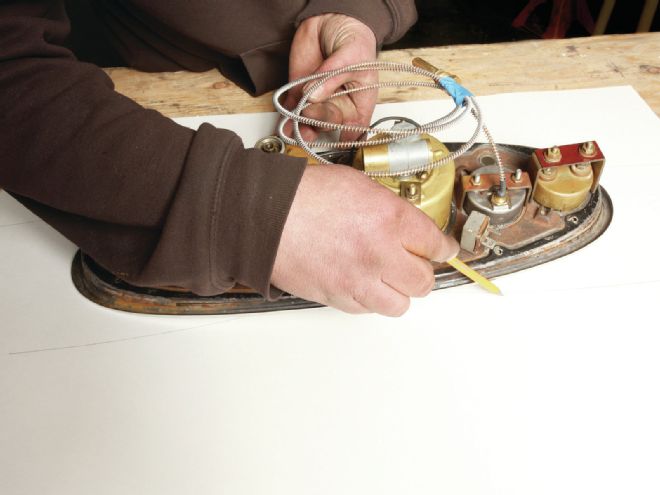 3 He also traced the panel on another piece of paper.
3 He also traced the panel on another piece of paper.
But being simple cars, Fords have pretty simple dashes. This one mounts to an arched flange on the bottom side of the cowl. So as Woolery put it, making a new dash is far easier than modifying an existing one. In his approximation it’s almost a 101-level project. As he estimated: “Anyone with half a brain in their head should be able to knock something like this out.” To prove his point he built another dash, this one for us to photograph.
It really is a straightforward process. He used a simple hammer-forming technique: sandwich a steel sheet (16 gauge in this case) between two pieces of subfloor plywood and incrementally fold over the edges with a hammer. The process does call upon shrinking techniques to flatten the flanges where they pucker around radiuses, but even that’s a simple process explained in most beginning metalshaping books. An acetylene kit isn’t even necessary; a regular propane or MAPP-gas torch would suffice to heat the metal. In fact, this is a no-welding exercise.
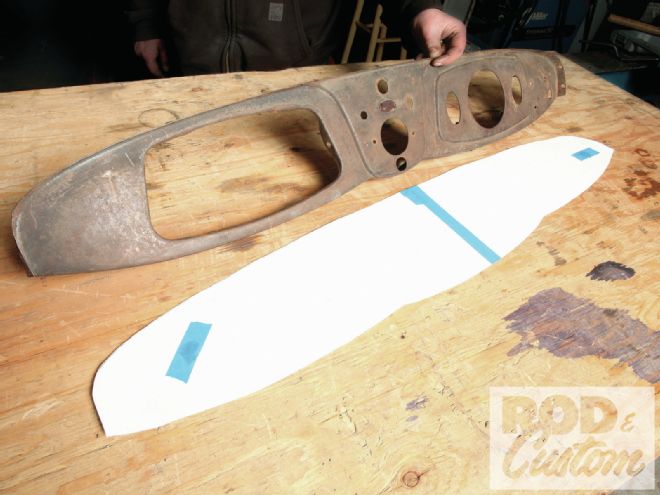 4 He then transferred the panel shape to the dash template albeit slightly larger to account for the larger overall dash shape. Transferring the panel shape directly to the dash pattern would work, but Woolery wanted the dash template for another job.
4 He then transferred the panel shape to the dash template albeit slightly larger to account for the larger overall dash shape. Transferring the panel shape directly to the dash pattern would work, but Woolery wanted the dash template for another job.
The dash that emerges honors the car’s heritage and its modifications. At the very least, it beats the pants off a set of generic gauges drilled into a flat dash.